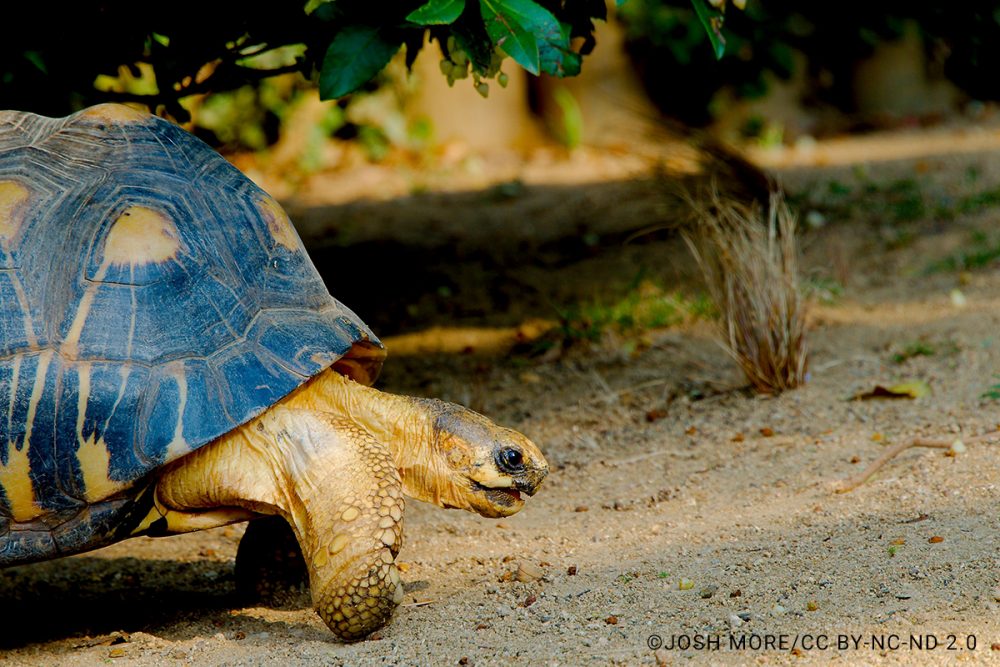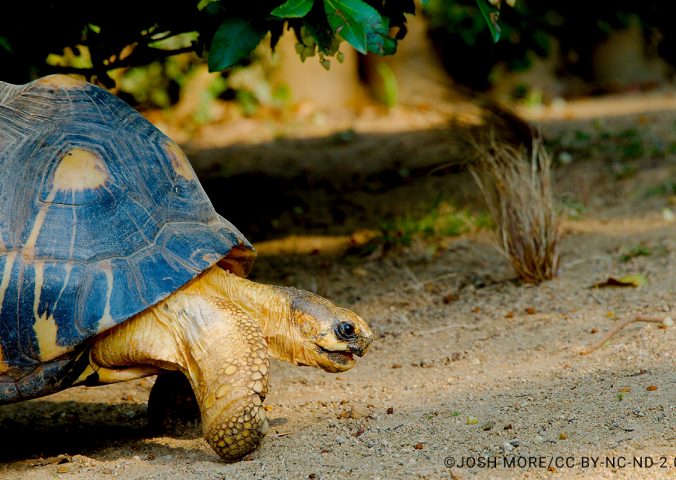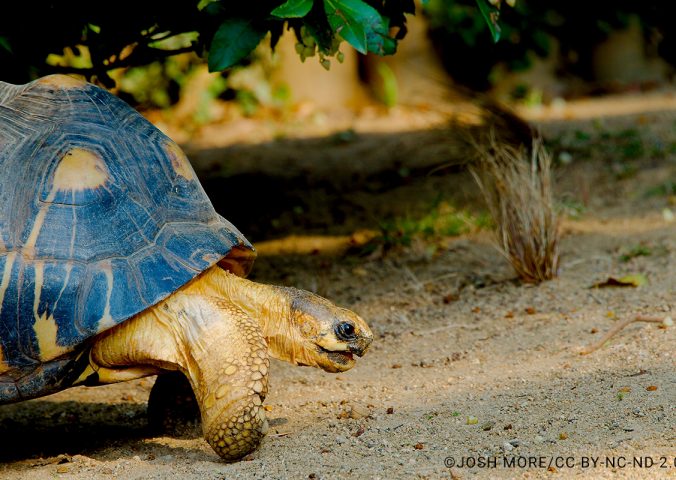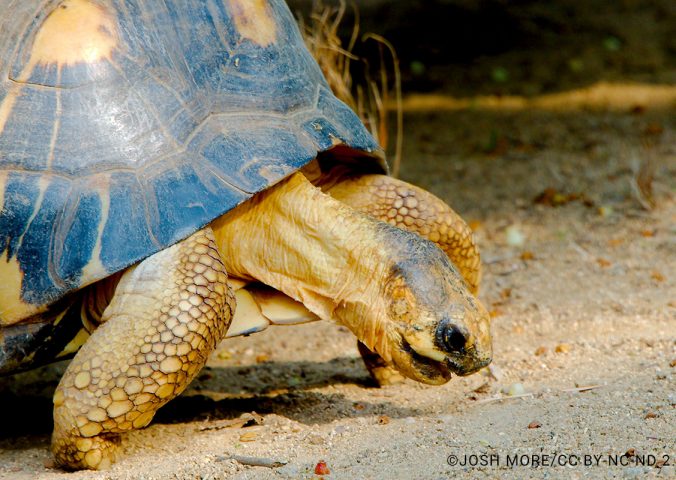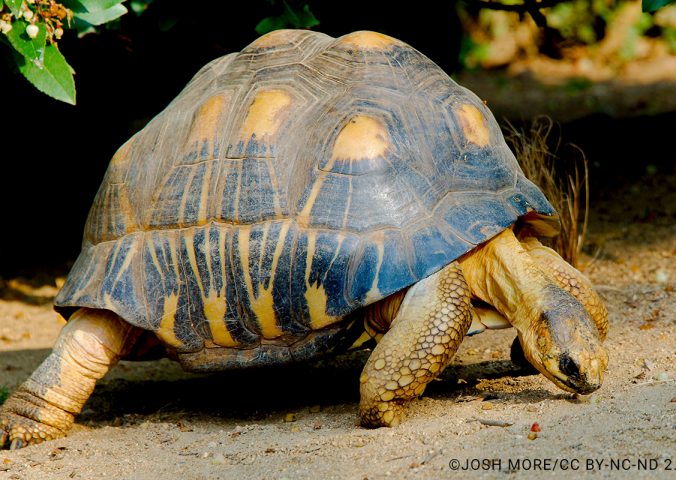About
The Critically Endangered radiated tortoise is a large and striking species that may live up to 100 years of age! This species has a very long generation length (more than 40 years), making it particularly susceptible to rapid population declines.
This instantly recognisable tortoise was once thought to be one of the planet’s most abundant tortoises. However, dramatic increases in the degradation and loss of its threatened dry spiny forest habitat, in combination with an explosion in demand on the species for food and the international pet trade, have led to incredible population declines.
Extreme human poverty in the region has slowly eroded traditional cultural beliefs around the tortoises. Local tribes that did not harm the tortoises have now turned to them for survival.
Populations of the radiated tortoise are thought to be declining by more than 80% across their distribution, which has shrunken by close to 50% in recent times. This species is protected nationally under Malagasy law and it occurs within four protected areas. It is listed on CITES Appendix I and there is a captive breeding centre in Madagascar.
- Order: Testudines
- Family: Testudinidae
- Population: Unknown
- Trend: decreasing
- Size: 24.2-39.5cm (?)
EDGE Score
Distribution
This species is found in Madagascar, from the area of Amboasary across the Karimbola and Mahafaly plateaus north of Tuléar to Morombe.
Habitat and Ecology
This species lives in the threatened spiny forests of southern Madagascar. It also occurs on the high plateaus inland and on coastal dunes. They are herbivorous, feeding predominantly on grasses.
